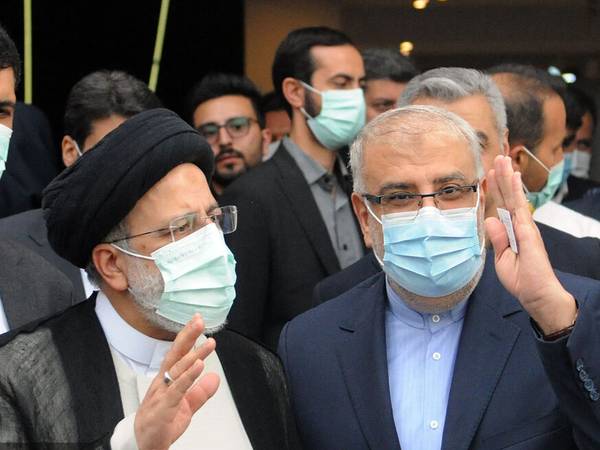Iran’s government has tried to dispel reports about declining oil exports with its media claiming that sales have topped one million barrels a day in April-May.
In a long report that appeared on Tuesday on the official government news website IRNA and the official newspaper Iran Daily, President Ebrahim Raisi’s government tried to rebuttal those who say oil exports have decreased in the wake of Russia's invasion of Ukraine.
Global industry sources reported in May that Russia has started taking market share from Iran, especially in China, by offering more discounts. Reuters reported on May 19 that “Iran's crude exports to China have fallen sharply since the start of the Ukraine war as Beijing favored heavily discounted Russian barrels, leaving almost 40 million barrels of Iranian oil stored on tankers at sea in Asia and seeking buyers.”
The reports published in the government media indicate that the Raisi administration wants to dispel any sign of weakness in oil exports that it takes credit for. While it has little to show after 10 months in office, the government takes credit for increasing illicit oil exports despite United States’ sanction.
Iran’s currency has slipped to all-time lows against major currencies since March when nuclear talks with the West came to an abrupt pause and the prospect for a nuclear agreement that could lift sanctions is dimming by the day.
The government lifted food import subsidies in early May that led to a steep rise in prices triggering protests by a population impoverished after four years of high inflation.
The government’s denial of a loss in oil exports followed a two-track approach. First, the oil ministry was quoted as saying that demand and exports vary according to market conditions and it is trying to do its best to serve the nation’s interests.
“Supply and demand ratios in the global oil market are shaped by the policies of exporting and importing countries, the economic growth rate and other factors,” the ministry was quoted as saying by IRNA. It added that even if a supplier is eliminated from one market, the ratio of global supply and demand is not affected necessarily. Instead “the geography” of the market might change and Iran can try to sell its oil in new markets.
While the government mouthpiece, IRNA, tried to dispel the notion that Iran’s exports have fallen, the quotes from the oil ministry were vague and did not deny the news.
The government’s second tract was using its official newspaper, Iran Daily, to claim that oil exports have surpassed one million barrels per day, while international industry sources put the figure at around 700,000-800,000 barrels per day at best.
In its May report, Reuters cited shippers’ data that said about 40 million barrels of Iranian oil remained unsold on tankers, with 20 tankers “at anchor near Singapore as of mid-May.” The report also said that that Iranian exports to China dropped between 200,000 to 250,000 barrels per day, replaced by Russian oil after sanctions by US and other countries.
But IRNA insisted that from mid-March to mid-May, Iran was exporting around one million barrels, without citing the discounted price. If Iran charges $80 a barrel with a heavy discount, this could still generate around $2.5 billion a month. IRNA said that oil and petrochemical exports together totaled an average of $3.75 billion a month in this period, or $45 billion annually.
